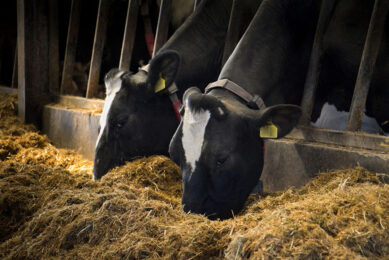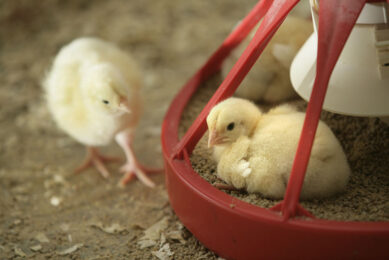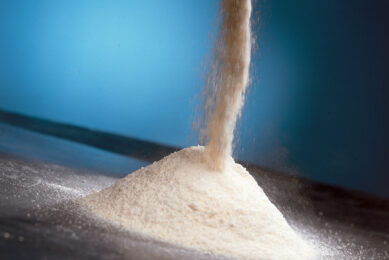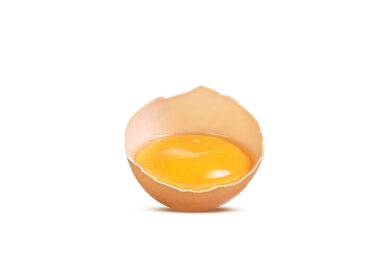Fermented corn, a superior and storable animal feed
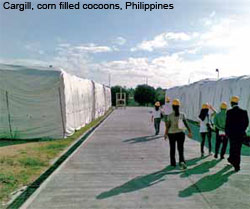
High moisture corn is difficult to store for a long period. Oxygen will quickly deteriorate quality, but under air-tight conditions this product might become a valuable feed ingredient due to the fermentation process that occurs when no oxygen is present.
A diet of 50% fermented (high moisture) corn mixed in with normally dried corn significantly increases both the weight gain versus time, and the gain-to-feed ratio for piglets without any deleterious effects. This is the outcome of recent proprietary tests run in Asia by a major international feed corporation and corroborated by a detailed scientific study under Professor Arnold Elepano at the University of the Philippines in Los Banos.
Dr. Elepano’s research report concluded that “even after 96-150 days of storage, high moisture corn can be used to feed breeding cattle and pigs, mature poultry, finishing pigs and beef cattle”. This confirms the excellent results obtained earlier in feedlots in the United States and Canada that have long used high moisture corn for fattening beef cattle as a study by Stock, Brink and Britton determined (Table 1).
Fermented corn
What does “fermented corn” mean? It is high moisture corn stored under gas tight conditions and therefore fermenting, thereby generating volatiles such as ethanol and acetic acid that have been shown to improve its nutritional qualities. Fermented high moisture corn initially produces a characteristic “fermentation” odour welcomed by farm animals.
What is new is that today, by use of flexible hermetic storage systems for storage up to 9-months such as in Cocoons™ storing corn in the Philippines, the otherwise hazardous growth of fungi and their release of aflatoxins can be prevented. In a flexible airtight Cocoon™, corn stored is well above the normal “equilibrium” moisture content of 13% up to between 18% and 30%. Inside a “modified” atmosphere rich in CO2 and low in oxygen is created, mainly due to the fermentation process. Thus, in a few days, the oxygen level sinks to an unbreathable level of 80-90% CO2 with a corresponding close to zero oxygen percentage.
Moulds need more than 1% of oxygen to develop, and therefore under such airtight storage the growth of mould-produced aflatoxins is prevented.
Breakthrough in corn processing
A breakthrough in corn processing for feed is now possible. Not only can high moisture corn be used for improved nutritional efficacy, but also the normal limit on the percentage of allowable broken kernels can now be exceeded. This means that any shelling process, which generates a higher percentage of broken kernels, which are normally prone to mould, no longer has adverse effects on storability of the grain. For the same reason, there is no longer a need to add so called “mineral binders” to the feed to counteract undesirable effects of normally unacceptable aflatoxin levels.
Thus, a further benefit of storing corn in airtight enclosures whether on the cob or shelled, is that a high percentage of broken kernels for which sellers are normally penalised, ceases to be important.
Animal feed involves grinding the corn anyway and the increased growth of fungi (and therefore, aflatoxins) in broken kernels under normal storage ceases to be a factor in airtight storage where, due to the virtual absence of oxygen, fungi fail to grow and insects die of asphyxiation.
Success in Philippines
The discovery of the favourable properties of long-term airtight storage of fermented corn is particularly good news in those regions such as Mindanao in the Philippines where sun drying is a problem. Unpredictable rains and capital and operational costs of adequate quantities of mechanical drying equipment at harvest time is unaffordable. Such bottlenecks are created at the drying stage, causing tremendous losses. By protecting the corn in a hermetic enclosure immediately, the quality of the corn can be preserved and the corn can be stored, waiting for favourable weather conditions. In 2008 in Mindanao in the Philippines, the National Agribusiness Corporation (NABCOR) successfully stored shelled corn (of 37% moisture and corn on the cob at 31%) without any increase in aflatoxins and with oxygen level remaining below 1% as a result of insect and commodity respiration. The resulting corn was found fully satisfactory for use in animal feed. As a matter of fact, the added nutritional value of the corn could make it receive “premium” prices in the market.
According to Tom de Bruin, President of GrainPro Philippines, the manufacturer of Cocoons: “safe storage of fermented corn creates attractive opportunities for farmers to grow corn where previously, for lack of sufficient harvest time drying, there was little demand, thus improving their income and producing a more efficient animal feed in a world often suffering from grain shortages.”
Because of high temperatures and high humidity in tropical climates, this lack of adequate rapid drying capabilities often leads to massive quantities of harvested corn going to waste, since moist corn cannot await drying for more than 48-hours without incurring significant damage and the resulting harmful aflatoxins.
With fermented corn, a new and favourable market is created for producing and storing corn, where previously such high moisture corn suffered from a lack of demand. After airtight storage of high moisture corn, the corn can be further dried at the end of multiple months of storage with its improved feed properties as fermented corn. The fermented corn then can be incorporated into commercial feed production with the resulting superior nutritional properties and significant cost savings.
At least one major international corporation is studying what this can mean to their procurement and feed formulation practices. In a related development, storage of moist rice up to 16% moisture content at 30ºC in hermetic storage for six months has been successfully utilised for human consumption. After six months of storage under tropical conditions the specific quality parameters of the rice were still met and it remained desirable for human consumption.




